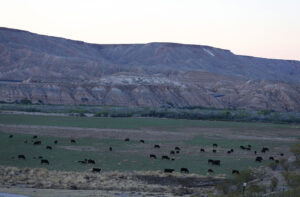The Antiquities Act and the limits of executive power

After several Native American artifacts were looted in the early 1900s, Congress passed the Antiquities Act of 1906 to allow presidents to establish “national monuments” and protect historic landmarks, structures, and similar objects on federal lands.
This delegation of authority was modest. Indeed, not only did Congress specifically limit presidential authority under the Act by requiring that any monument be made up of specific objects located only on federal lands, but the Act also mandated that any land that is made part of a national monument be “the smallest area compatible” with protecting the landmark, structure, or object.
But modern presidents have not seen their authority as so limited. Nearly 90% of all areas designated as national monuments under the Act have come since the beginning of the 21st century, many larger than entire U.S. states. And when a president establishes a national monument, there are severe consequences for the millions of Americans who depend on public lands for their livelihoods, including cattle grazers, energy producers, and commercial fishermen. If a person violates the Act, they are subject to criminal sanctions, and presidents often restrict how public lands are used, creating severe economic consequences for individuals, industry, and even the states where a monument is located.
Because of these consequences, the modern expansion of national monuments has triggered various lawsuits that raise fundamental questions of legislative, executive, and judicial power. For example, litigants have challenged monument designations as ultra vires executive action because the monuments include things that are not “objects” under the Act, are not on “land,” and include vast areas that are not “the smallest area compatible” with protecting a monument. Challenges have also raised constitutional claims and other doctrines designed to protect the Constitution’s separation of powers—including the nondelegation doctrine and major questions doctrine.
These issues will not go away anytime soon. Presidents, including the current president, have continued to designate large monuments, and members of the Supreme Court have stated that they are willing to review the limits on the executive branch’s authority under the Antiquities Act.
Read the full article, originally published in Mealey’s Fracking Report.








